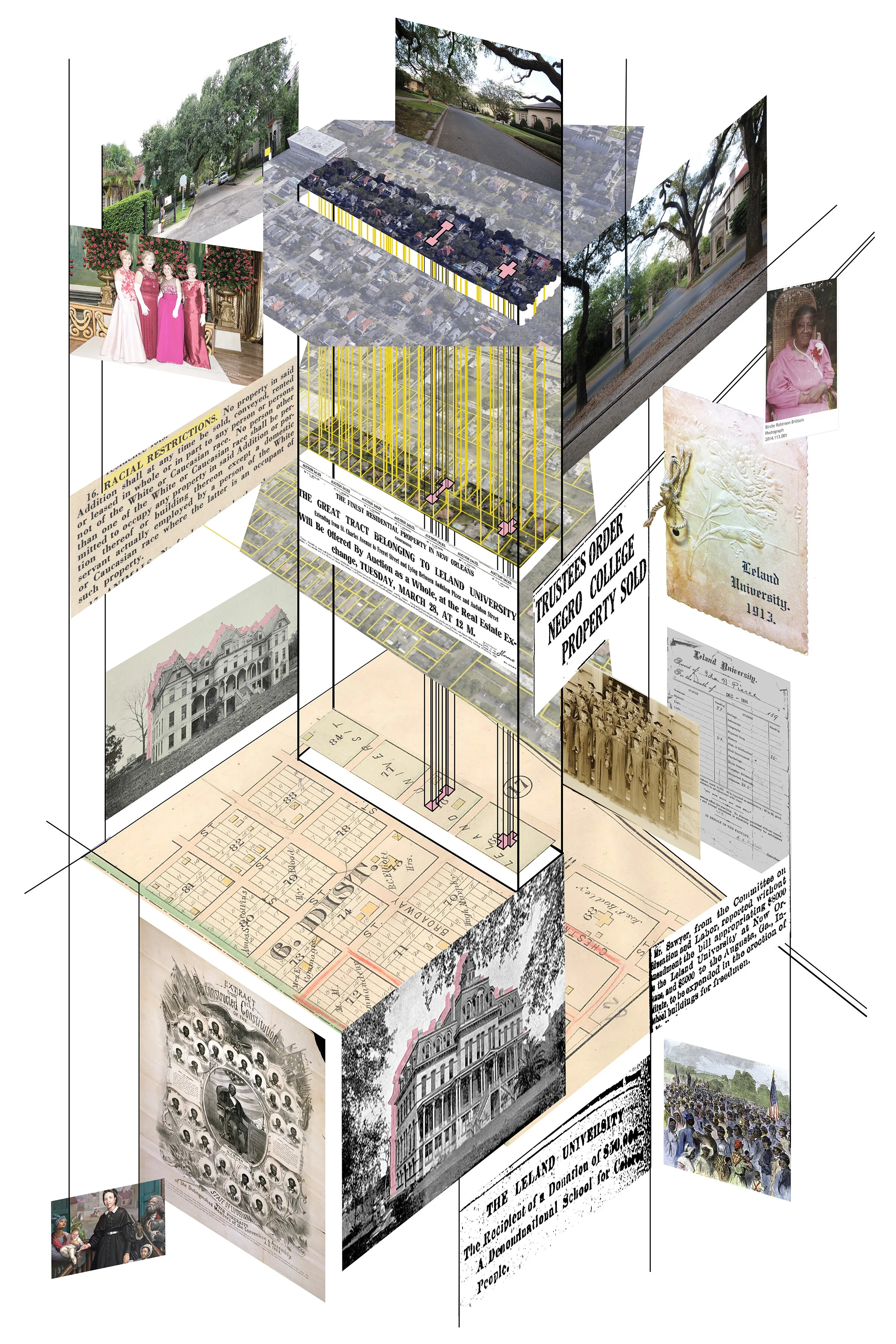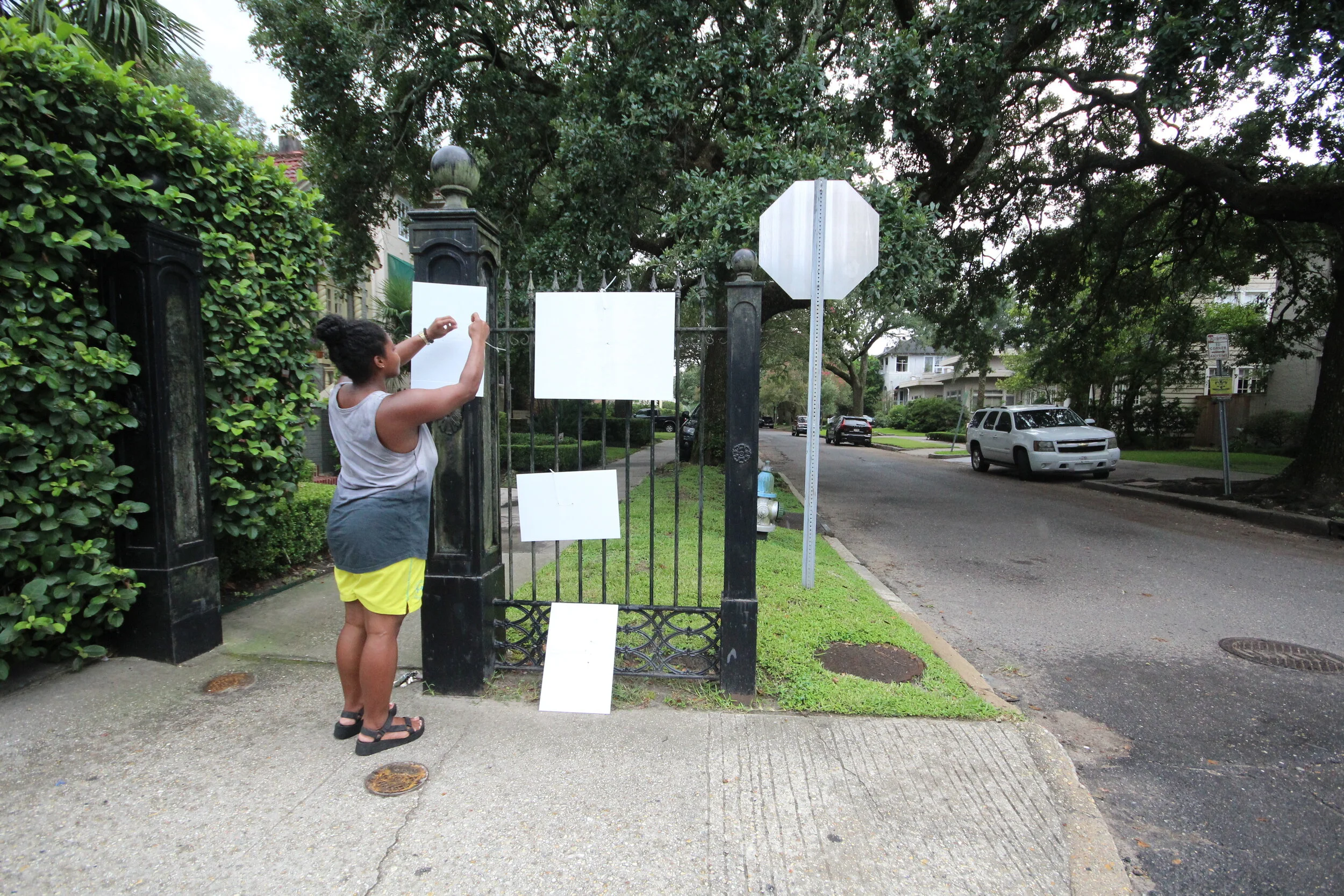
Reconstruction Projects
A forensic architectural research, education and advocacy initiative to embed memories of Reconstruction into artificially White New Orleans spaces, following 150 years of White supremacist efforts to erase and obscure the impact of the era’s antiracist activism.

Leland University in New Orleans
A graphic history of spatial and institutional memory, from before Emancipation to the present. This drawing illustrates Leland University in New Orleans as a product of the First Reconstruction; its displacement under Jim Crow apartheid; and its legacy which, though lost beneath segregated White Uptown New Orleans, lives on in people and artifacts spread across Louisiana.
More on some of the images and artifacts pictured here from the River Road African American Museum and the Documentary & Oral History Studio at Loyola University New Orleans.
And, read about the Fourth District Missionary Baptist Association’s efforts to revive the spirit of Leland on the site of the college’s second campus in Baker, LA, north of Baton Rouge.

Leland University, 2020
Leland’s University Hall stood facing St. Charles Avenue just behind its current intersection with Newcomb Boulevard. Today, no plaque, marker or monument tells the story of this Black educational institution.

Leland University, 1890s
Founded in 1870 by Northern Baptists for the education of freedmen, Leland University was located on St. Charles Avenue between Audubon Boulevard and Audubon Street. It was a liberal-arts school, open to men and women of all races, but predominantly Black.

Newcomb Boulevard, 2020
Leland University was forced out of its prime location by hostile neighbors, inadequate funding, and the Great Hurricane of 1915. The school was moved to rural Baker, north of Baton Rouge, where it operated until 1960. The New Orleans campus was subdivided into the exclusive, White-only Newcomb Boulevard residential development.

Public-history experimentation on Newcomb Boulevard, 2018

Public-history experimentation on Newcomb Boulevard, 2018

Mechanics Institute Massacre, 1866
On July 30, 1866 at the Mechanics Institute on University Place, White supremacists massacred over 100 Black and White political leaders, who had gathered to create a new constitution which would allow Black men to vote.

Mechanics Institute Massacre, 2020
The Mechanics Institute was demolished in 1892. The Hotel Grunewald, today the Roosevelt, now stands on its site. No plaque, marker or monument tells the story of this event.

Abraham Lincoln School for Freedmen on the campus of the University of Louisiana, University Place and Common Street, 1866. As illustrated in Harper’s Weekly Magazine, archived at Southern University Libraries, Baton Rouge.

Site plan of University Place, 1866

Site plan of Roosevelt Way, 2021

Roosevelt Way, 2021